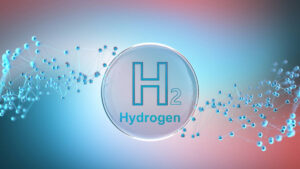GOT GAS: Olympics driving hydrogen visibility

Hydrogen's profile has been raised by Toyota's use of fuel cell vehicles at the 2024 Paris Olympics. Pic: Getty Images
- Hydrogen profile raised by Toyota in the 2024 Paris Olympics
- Car giant provides fleet of 500 fuel cell-powered Mirai vehicles
- Nationals Senator Matt Canavan comes out swinging against hydrogen, but hang on
As the official vehicle supplier for the 2024 Paris Olympics, Toyota has been using the opportunity to spruik hydrogen as the clean fuel of choice.
The event is an opportunity to increase exposure of its hydrogen fuel cell technology, which fuels the fleet of 500 Mirais that it provided, as well as prototypes of one of Australia’s favourite vehicles – the HiLux.
But we digress.
At its core, providing the Mirais for the Olympics does indeed do wonders to raise the visibility of hydrogen, particularly in Europe where the gas is seen as a core component of its net zero plan.
Despite accusations that it is a form of green washing – not completely invalid given that Germany’s new proposed power plants will run on natural gas until there’s enough hydrogen to go around – it nonetheless could prove to be yet another turn of the key to unlock greater adoption of the gas.
There are plenty of steps that need to be taken to reach this goal.
- More renewable energy generation capacity that will power more electrolysers
- Transport infrastructure, as the gas is notorious for being significantly more challenging to move around compared to natural gas; and
- Investment into a potential carrier like ammonia, which is far better understood and simpler to transport.
Besides supply, transport and storage, efforts will also be needed to build demand.
This might need steps to pick the low hanging fruit, ie industries that already use hydrogen in their processes, as well as small-scale efforts such as plants at truck refuelling stops or the like.
While Got Gas remains sceptical of hydrogen ever becoming viable for the general population’s transportation needs, there’s a very real argument for its use in power generation and commercial transport.
A hydrogen detractor?
While Europe is getting a dose of hydrogen’s bright side, an Australian politician has come out swinging against the gas.
Nationals Senator Matt Canavan has voiced out in an opinion piece that unlike surging coal demand, hydrogen is still 20 years away from playing a significant role in the energy mix.
He also took the opportunity to lambast the Federal Labor Government on its hydrogen plans, saying it risked jobs and Australia’s economic future.
However, it wasn’t all that long ago that honourable senator, whilst serving as the Minister for Resources and Northern Australia for the previous Coalition Government, had come out swinging in FAVOUR of hydrogen.
Back in July 2019, Canavan and then Minister for Energy and Emissions Reduction Angus Taylor flagged that a “National Hydrogen Strategy that will open up export markets in Asia” was a step closer following the release of consultation papers. (referenced here with working link here).
If that sounds familiar, it is because the current government hasn’t actually discarded said strategy but has doubled down on investment.
There are other statements made by Canavan, including one about how Australia can become a world leader in supplying hydrogen to other nations from September 2019, which is basically an earlier version of the Australian Energy Market Operator’s Hydrogen Superpower scenario.
So why has Canavan made what appears to be an about face?
One is the obvious politics: the Opposition can’t be seen backing anything linked to renewables and the current government’s take on the hydrogen strategy has moved from the previous “clean hydrogen” stance taken by its predecessor to a focus on Green Hydrogen.
“Clean hydrogen” is a term used by both industry and the previous government for any kind of hydrogen production – be it by gasifying coal or cracking methane (natural gas) – as long as the resulting emissions are dealt with, presumably with the application of carbon capture and storage.
That contrasts with Green Hydrogen, which uses renewable energy to power electrolysers that crack water molecules into hydrogen and oxygen.
Second, and this is linked to the first, Canavan has been unwavering in his support for coal and anything that takes away from that is a big no-no.
That’s precisely why the current take on the National Hydrogen Strategy is unacceptable for him and thus deserving of the biggest bricks he can throw.
Related Topics

UNLOCK INSIGHTS
Discover the untold stories of emerging ASX stocks.
Daily news and expert analysis, it's free to subscribe.
By proceeding, you confirm you understand that we handle personal information in accordance with our Privacy Policy.








